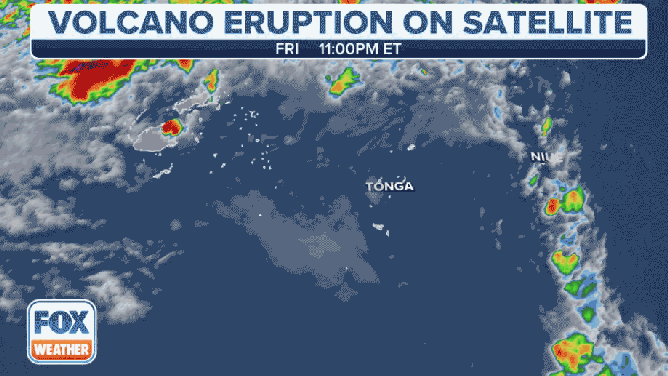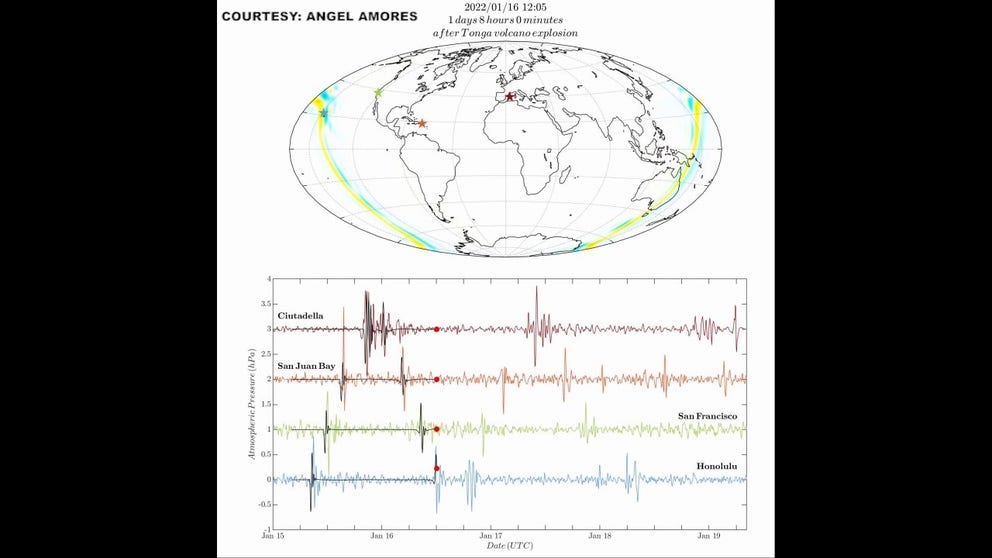Watch: Simulation shows how Tonga eruption pressure wave circles globe multiple times
The violent eruption created a rapid compression of air that spread outward from the volcano in all directions, passing through all places on Earth several times over at least five days.

The Jan. 14, 2022, eruption of an underwater volcano near Tonga was captured on satellite.
(FOX Weather)
When the underwater volcano erupted near Tonga on Jan. 14, it sent literal shockwaves around the planet.
The violent eruption created a rapid compression of air that spread outward from the volcano in all directions. Weather instruments around the globe then measured minor changes in atmospheric pressure as the shockwave passed.
But the wave didn't just pass once; barometers measured the shockwave making multiple passes as the pressure wave spread across the planet, circling the globe several times.
Simulation of Pressure Wave from Tonga Volcano Explosion
A graphic simulation showing the pressure wave created from the underwater volcanic eruption as the wave circled the globe for several days. (Courtesy: Angel Amores)
Angel Amores, a postdoctoral researcher at the Mediterranean Institute for Advanced Studies in Illes Balears, Spain, was able to simulate the pressure wave's journey and match it to actual barometric readings in four locations around the world: Ciutadella, Spain, San Juan Bay in Puerto Rico, and San Francisco and Honolulu.
You can see how the waves ripple in a pond as if one were to toss a rock into the water, the pressure waves flow and bounce around the planet.
"Blue colors are low pressures, and red colors are high pressures," Amores told FOX Weather. "It can be seen how it converges in the antipodes, in the Sahara Desert, give or take, and after it continues traveling around the world."
Amores said his simulation filters out lower frequency signals that wouldn't represent the volcanic explosion.
His calculations and observations show the wave bounced around the planet for days.
"The simulation is five days long, but I think the perturbances lasted longer since some colleagues from the Maldives told me they saw it (Sunday) in their records."
